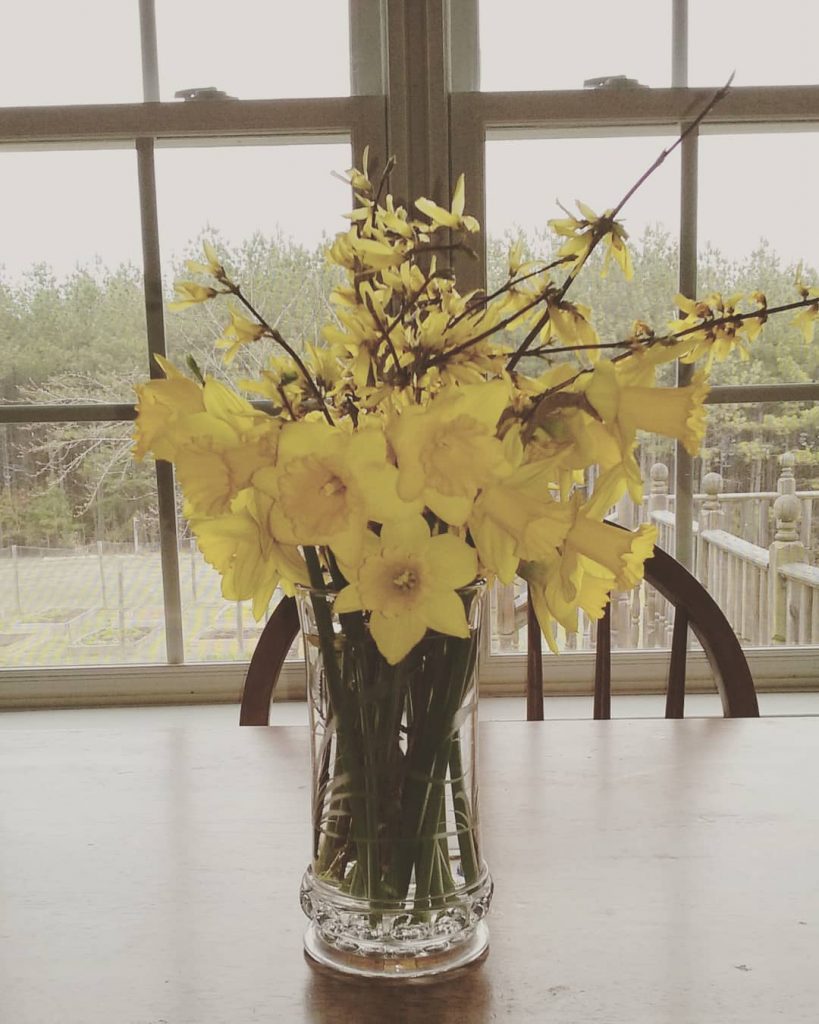Spring snow…no, no, no! That’s what I thought as I looked out the windows just now. It’s like I’m sitting in the middle of a snow globe. Heavy, thick, wet snowflakes are swirling down and the grass is covered with snow.
So too is my poor ornamental pear tree and the first peach tree in the orchard that decided it was spring in February and time to bloom.
The daffodils are drooping under the snow, the early phlox is covered, and the iris and daylilies already peeking out from the earth…well, they’re all in for a rude surprise.
What should you do about spring snows threatening your garden?
Spring Snow in the Garden: Will It Hurt My Plants?
In a word, no: spring snow in the garden will not hurt your plants.
That’s the good news. Snow acts as an insulator, so even if the temperatures drop (as ours are expected to do so later today) it won’t hurt your plants.
The bad news is that my peach tree probably won’t bear fruit this year. Freezes aren’t good for the buds and the bees are definitely still in the hive keeping warm and waiting for spring.
The bees know. They wait until the temperatures are right before emerging. And if they’re fooled by a spate of warm weather, they head right back to the hive to wait out the cold spell.
Trees and Spring Snow
But trees, once they begin to bud, are committed to the process. That doesn’t mean your tree will die. The buds on my peach tree will turn brown, and any newly emerging leaves on the peach or pear tree might turn brown.
The trees are, however, ten years old now, with a strong root system and enough energy stored to put forth another set of leaves. They’ll live to tell the tale and bear fruit for me another year.

Bring Some Flowers Inside
Yesterday, I cut as many daffodils as I could fit into a vase along with some forsythia. The snow may turn my daffodils brown, but they may do fine. I thought I should enjoy them anyway.
Please don’t panic if you’re in an area, like me, that’s experiencing snow today. If your flowers are already emerging, they will be fine.
Let’s face it. In the millions of years that plants have been on the earth, they’ve probably withstood more extremes than a freak late snowstorm. They’re probably laughing at our concern even now (if they could laugh).




